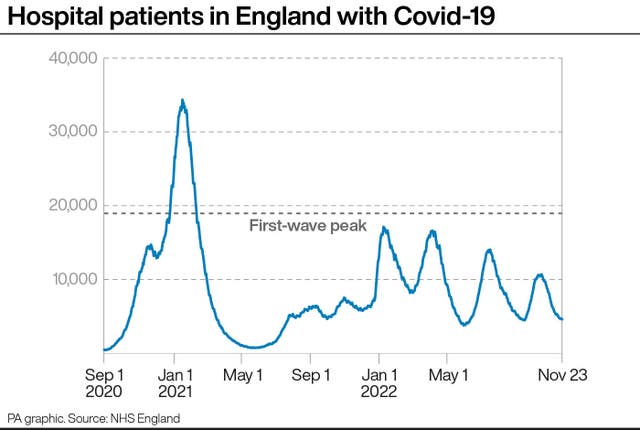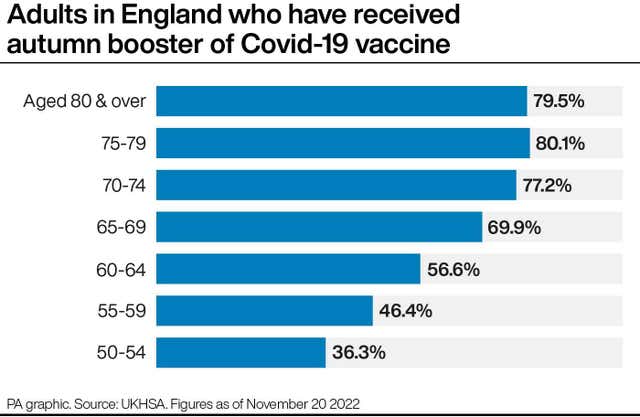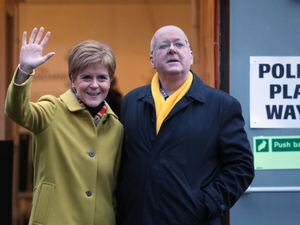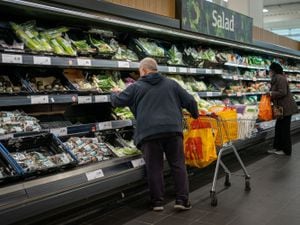UK Covid-19 infections fall below one million for first time in two months
Northern Ireland is the only nation where infections are not showing a clear decline.

Total Covid-19 infections in the UK have fallen below one million for the first time in two months, with most parts of the country continuing to see a drop in levels of the virus.
Hospital admissions and deaths are also on a downwards trend, with health experts linking the decrease to the roll-out of booster doses of vaccine.
Northern Ireland is the only nation where infections are not showing a clear fall, with signs the recent decrease has levelled off.
The total number of people in private households in the UK testing positive for coronavirus stood at 972,400 in the week to November 15, down 14% from 1.1 million in the previous week, according to the Office for National Statistics (ONS).
It is the first time UK-wide infections have fallen below one million since mid-September.

During the latest wave, the total peaked at just over two million in mid-October.
This is well below the peaks seen earlier in the year, when infections climbed to nearly four million in July and just under five million in March.
Sarah Crofts, ONS deputy director for Covid-19 infection survey analysis, said: “Infections have continued to decrease across much of the UK, except in Northern Ireland where rates have remained broadly the same.
“In England, infections are still decreasing among most age groups, although the trends among children are less clear in these latest data.
“We will continue to monitor the data closely as the winter months progress.”
The number of people testing positive for coronavirus in England in the week to November 15 was 809,200, or around one in 65 people, down from 940,700 the previous week, or one in 60.
Scotland has seen infections fall to 83,700, or one in 65, down from 97,500, or one in 55.
Both England and Scotland have now seen infections drop for four weeks in a row.
Wales has recorded five consecutive weekly falls, with 45,400 people likely to have Covid-19 in the latest survey, the equivalent of one in 65 people, down from 56,000, or one in 55.
In Northern Ireland the trend is described by the ONS as “uncertain”, with an estimated 34,100 people having Covid-19, or one in 55, compared with 34,200 in the previous week, which was also one in 55.
Infection rates in England are highest among 25 to 34-year-olds, with 1.8% likely to had have the virus in the week to November 15 – the equivalent of one in 55.
There were “possible signs of an increase” in virus levels among this age group, the ONS said.
There was also an “uncertain” trend in levels among primary and secondary school-age children.
The ONS infection survey is the most reliable measure of the prevalence of coronavirus and is based on a sample of swab tests from households across the UK.
There is a slight lag in the reporting of the data, due to the time it takes for the survey to be compiled.
More recent figures show the number of people in hospital with coronavirus is continuing to fall in all four UK nations, though there are signs the rate of decrease in England may be slowing down.

Some 4,600 patients testing positive for Covid-19 were in hospital in England on November 23, down 8% from the previous week.
This is the smallest weekly percentage drop for almost a month, with numbers having been on a downwards path since peaking at 10,688 on October 17.
Admission rates in England stood at 4.4 per 100,000 people in the week to November 20, down from 5.1 and the sixth consecutive weekly fall.
Dr Mary Ramsay, director of public health programmes at the UK Health Security Agency (UKHSA), described the latest Covid data as “reassuring” and said the fall in hospital rates among over-50s was “also a result of so many people having come forward for their booster.”
She continued: “We urge those who have not had their booster this autumn to do so as soon as possible. Vaccination remains the best way to protect yourself, your family and the NHS, particularly as we head into winter.”

All people aged 50 and over are able to book an appointment for an autumn booster dose of Covid-19 vaccine, providing they had their last jab at least three months ago.
Doses are also available to frontline health and care workers, pregnant women and people with weakened immune systems.
Around four in five people (79.5%) aged 80 and over in England have now received a booster dose, along with a similar proportion of 75 to 79-year-olds (80.1%) and 70 to 74-year-olds (77.2%).
The UKHSA data, which covers vaccinations up to November 20, suggests take-up is slightly lower among younger age groups, at 69.9% for 65-69 year-olds, 56.6% for 60-64 year-olds, 46.4% for 55 to 59-year-olds and just 36.3% for 50 to 54-year-olds.




